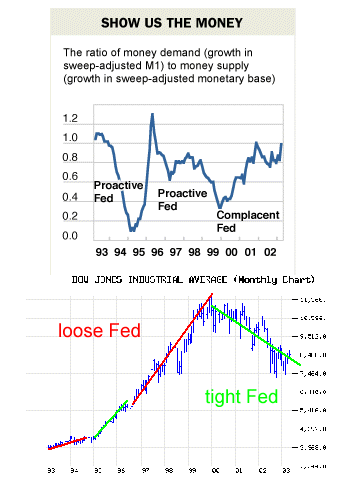|
Interest Rates and
the Money Supply |
|
Interest Rates and
the Money Supply |
|
It's not clear if tracking
the money supply is of any predictive value. Some have blamed Greenspan for too rapidly
expanding the money supply in 1999 (in fear of a Y2K problem) causing the final stock
bubble, and then too aggressively draining the money supply in 2000 and precipitating the
market collapse (see AT LEFT) |
note that when interest rates declined (97 and 98) the market went up (this makes sense) but in 99 as interest rates rose the market continued to rally but during 2000 and 2001 as interest rates declined (supposedly a good thing) the market declined as well (also see longer graph) some would argue that the lack of response to declining rates implies a deflationary collapse is unfolding |
|
